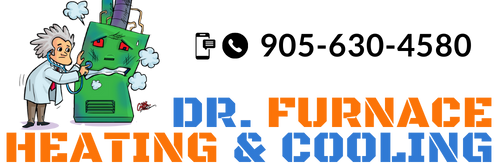When it comes to annual maintenance on the heating and cooling equipment in your home, it’s all about reviewing the essentials. Thorough maintenance ensures that your equipment performs at its best while achieving top cost efficiency. Also, allowing opportunities to identify repair and replacement needs help to eliminate downtimes during crucial seasonal times. Your furnace never breaks down when it’s 20 degrees C outside. Just as the Air Conditioner never breaks down when it’s minus 15 degrees C.
It also allows us to spend valuable time with you, the homeowner. In fact, every heating and cooling season service check should start and end with a Home Owner visit. This helps us uncover any performance or comfort issues they have noticed. As well as discussing future repair and or upgrades.
The following outlines the crucial steps for performing yearly heating and cooling inspections. Note that they should be replaced at least two additional times per year in addition to changing filters during these visits.
21 Point Furnace Maintenance Checklist
- Check and clean all safety controls and wire connections
- Clean and inspect burners and burner compartment
- Inspect heat exchanger for cracks, rust, and other damage
- Clean and check thermocouple/flame sensor
- Clean and check ignitor / spark electrode / pilot
- Clean blower/test run capacitor performance
- Perform air balance and adjust dampers for heating season/cooling mode accordingly
- Check and flush condensate drains/traps
- Inspect venting system for leaks / slope / support / debris
- Check for required service access/clearances to combustibles
- Check for adequate combustion air requirements
- Cycle furnace and monitor the steps of operation, explain to the homeowner if desired
- Check and record manifold pressure
- Check temperature rise and adjust blower speed as required
- Perform CO test-Circulating air / free air/vent & record
- Test fuel line for leaks at the appliance
- Check the presence of gas pipe pressure test tag
- Check for manufacturer’s installation/operation manuals
- Wipe down furnace / clean in and around the furnace
- Offer replacement batteries for smoke detector and or thermostat
- Check for CO alarm
- Review and document the results/recommendations with the client
18 Point Air Conditioning Inspection
- Remove the electrical disconnect cover & tighten the connections
- Visually inspect the condenser for any type of damage
- Visually inspect the copper tubing for leakage or damage
- Check ductwork for loose or leaking connections
- Check the circuit board & wiring for scorching or discoloration
- Tighten all electrical connections
- Check for proper voltage to the condenser
- Check the thermostat for proper mounting, location, and settings
- Clean evaporator coil
- Check the discharge pressure of the system refrigerant levels
- Check the suction pressure of the system refrigerant levels
- Check the amp draw of the condenser fan motor
- Check the amp draw of the compressor
- Check the amp draw of the blower motor
- Check the temperature drop across the evaporator.
- Check the temperature difference between rooms max.
- Check superheat & sub-cooling
- Perform air balance and adjust dampeners as required
Finally, we will always keep in mind how heating and cooling units behave as part of the whole system, which, along with your equipment, includes the ductwork, windows, diffusers, return and supply air, and the thermostat. This holistic, big-picture approach will ensure your comfort, equipment performance, energy efficiency, and our loyalty to you for years to come

Unfortunately, I can’t help you. I think you will find the right solution.
Your comment is awaiting moderation.